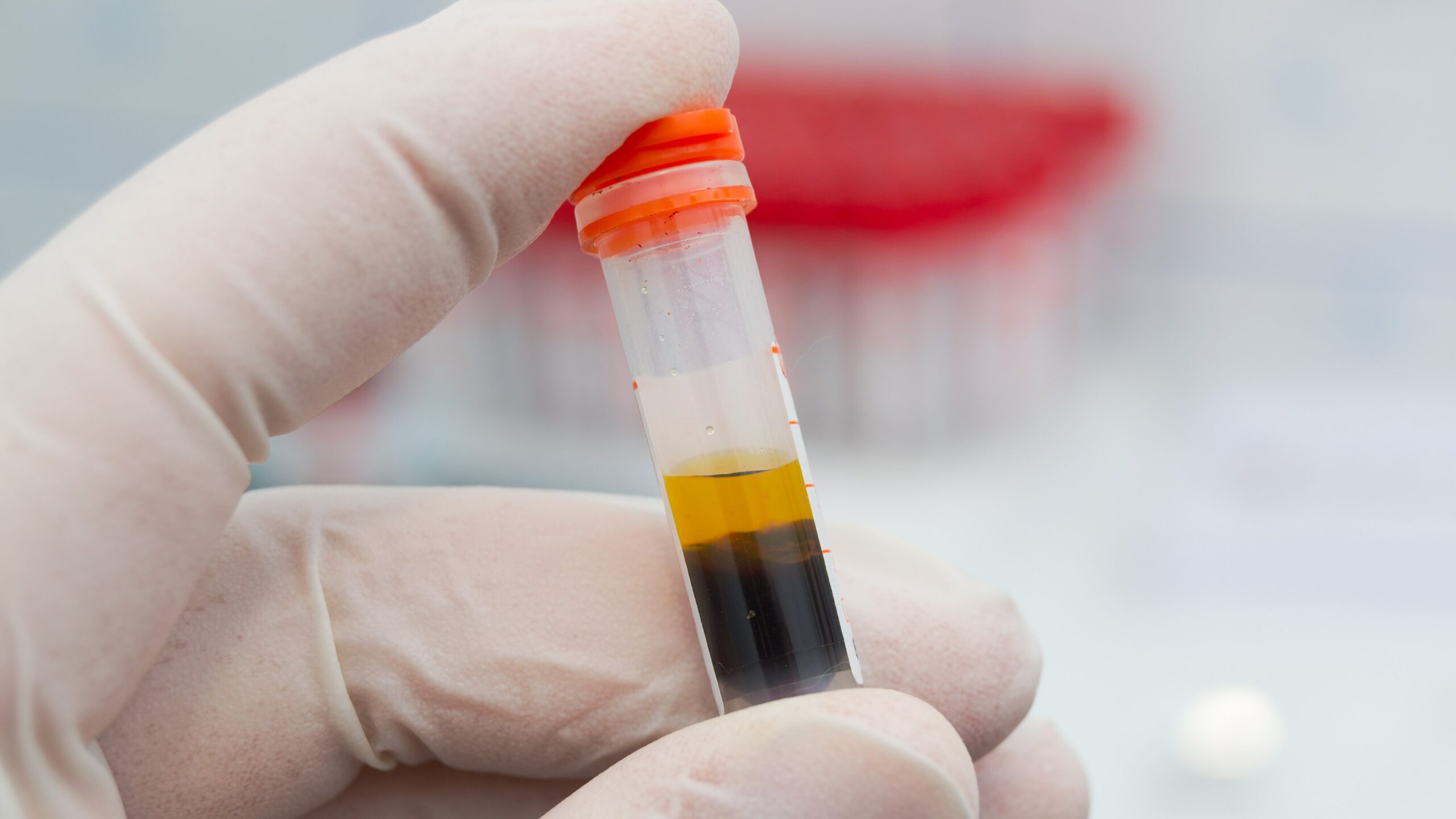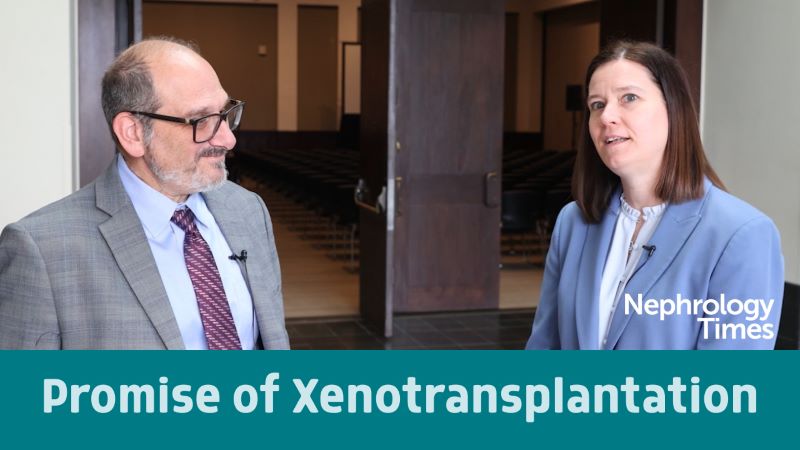In kidney transplantation, the mismatch in the human leukocyte antigen (HLA) system between the donor and recipient transplant pair has a central role in both Banff-defined rejection phenotypes, T-cell-mediated rejection (TCMR) and antibody-mediated rejection (ABMR), primarily related to the presence of donor-specific antibodies to HLA (HLA-DSA). According to Aleksander Senev, MD, PhD, and colleagues, the relationship between HLA molecular mismatches and TCMR is unknown.
The researchers conducted a retrospective cohort study to examine the associations between the different donor HLA-derived T-cell epitope targets and the occurrence of TCMR as well as borderline histologic changes suggestive of TCMR following kidney transplantation and graft failure after kidney transplantation. Results of the study were reported in the American Journal of Kidney Diseases [2022;80(6):718-729].
The PIRCHE-II (Predicted Indirectly Recognizable HLA Epitopes by Recipient HLA Class II Molecules) algorithm evaluates and quantifies the T-cell epitope targets, linear peptides of the mismatched donor HLA molecules. The study exposure was scores calculated by the HLA matching algorithm PIRCHE-II and HLA eplet mismatches. The outcomes of interest were TCMR, borderline changes suggestive of TCMR, and allograft failure. The association between HLA epitope targets and study outcomes was calculated using multivariable cause-specific hazards models.
All models were adjusted for donor and recipient age, cold ischemia time, repeat transplantation, donor type (brain death, circulatory death, living), panel-reactive antibody (%), and induction therapy (no induction vs basiliximab vs other treatment). Sensitivity analyses in the HLA-DSA-negative patients were performed in the subpopulation of patients without pretransplant HAL-DSA, with censoring of the survival models at time of de novo HLA-DSA occurrence.
Eligible patients underwent single kidney transplantation at the Leuven University Hospital, Leuven, Belgium, between March 1, 2004, and February 6, 2013. The transplantations were performed with compatible T- and B-cell complement-dependent cytotoxicity tests and compatible ABO blood groups. Clinical data were extracted using electronic files. The large majority of patients were prescribed tacrolimus, mycophenolic acid, and corticosteroids as basic immunosuppressive regimen. No desensitization therapies for HLA antibodies were used.
Among the 893 patients who met inclusion criteria, retransplant HLA antibodies were present in 233 patients and 40.8% (n=95) had pretransplant HLA-DSA, which were mainly directed against HLA class II molecules. Forty-three patients developed de novo HLA-DSA, and they were also mainly against the donor HLA Class II molecules (33/43; 79%).
Median follow-up was 8 years. For 85.3% of the cohort, standard maintenance immunosuppression consisted of tacrolimus, mycophenolic acid, and corticosteroids. Of the total cohort, 41.3% (n=369) received induction therapy, primarily basiliximab (317/369; 85.9%).
Median total, HLA class I, and HLA class II PIRCHE-II scores were 310, 140, and 177, respectively. Of all the HLA molecules, HLA-DQA1/B1 had the highest median PIRCHE-II score at 75.
Following the baseline biopsy, histologic follow-up included 3515 posttransplant biopsies (2611 protocol and 904 indication biopsies). A total of 277 patients developed TCMR (not including borderline TCMR) in at least one posttransplant biopsy. According to the Banff classification, 43.0% (n=119) had grade I acute TCMR, 55.2% (n=153) had grade II acute TCMR, and 1.8% (n=5) had grade III acute TCMR.
Following adjustment for donor and recipient age, donor type, cold ischemia time, repeat transplantation, panel-reactive antibody, and induction therapy, results of multivariable cause-specific hazards analyses demosntrated there was an association between each 10-point greater total of PIRCHE-II score and an increased risk of developing TCMR (hazard ratio [HR], 1.01; 95% CI, 1.00-1.02; P=.009). Analyses on each HLA molecule separately demonstrated that the association was primarily related to the PIRCHE-II score for HLA class II molecules (HR, 1.01; 95% CI, 1.01-1.02; P=.002). There was no trend for association between the PIRCHE-II score for HLA class I and the occurrence of TCMR.
Beyond the 277 patients with Banff-grade TCMR, 134 others showed only borderline changes suggestive of TCMR in at least one posttransplant biopsy during histologic follow-up. The findings in this subgroup were similar to those in the group with acute TCMR: the adjusted cause-specific hazards model showed the PIRCHE-II score for HLA-DRB1 (HR, 1.07; 95% CI, 1.04-1.10; P<.001) and HLA-DQAI1/B1 (HR, 1.02; 95% CI, 1.01-1.03; P=.002) independently contributed to the combined outcome of acute TCMR and borderline TCMR. There was no association between the PRICHE-II score for class I molecules and the combined acute TCMR/borderline TCMR outcome.
If restricted to rejection episodes during the first 3 months following transplantation, there was an association with early acute TCMR and only the T-cell epitope targets originating from the donor’s HLA-DRB1 and HLA-DQB1; there was no association between class I molecules and early acute TCMR. Further, there was a statistical difference between the median PIRCHE-II score for HLA class II in patients with TCMR compared with those without TCMR (129 vs 201, respectively; P<.001). Those differences were not seen for class I PRICHE-II scores.
The researchers cited some limitations to the study findings, including the single-center design, the predominately White European population with general and continued access to immunosuppression, the possibility that the use of the HLA-A, B, and DRB1 antigen matching used in the allocation scheme may have led to some selection bias, the lack of detailed data on histological findings other than acute TCMR, borderline TCMR or the type of treatment used to treat TCMR, and the possibility that the stringency used in the PIRCHE-II score is too low, which could explain the small hazards seen in the study.
In conclusion, the authors said, “This study suggests that PIRCHE-II scores for HLA-DRB1 and DQB1 molecules are consistently independent predictors for the development of acute TCMR and kidney graft failure. This study provides clinical evidence of the importance of the HLA class II molecular mismatches on the development of cellular alloimmunity in the absence of overt humoral alloreactivity. Our clinical findings suggest that in the presence of standard immunosuppression, donor HLA class-II-directed immune responses play a crucial role in T-cell alloimmune activation from very early after kidney transplantation. Further validation of these findings and refinement of the exact allorecognition in early rejection episodes is warranted, taking into consideration the different immunogenicity of DRB1 and DQB1 molecular mismatches. These insights will help in better predicting the occurrence of the TCMR after kidney transplantation and could be used for improved risk stratification.”
Takeaway Points
- Researchers reported results of a retrospective cohort study to examine the associations between the different donor HLA-derived T-cell targets and the occurrence of T-cell-mediated rejection (TCMR).
- In a cohort of 893 patients, 277 developed TCMR, and 134 developed only borderline changes suggestive of TCMR.
- HLA class II mismatches were associated with early episodes of acute TCMR and allograft failure. There was no association with class I mismatches.






 © 2025 Mashup Media, LLC, a Formedics Property. All Rights Reserved.
© 2025 Mashup Media, LLC, a Formedics Property. All Rights Reserved.